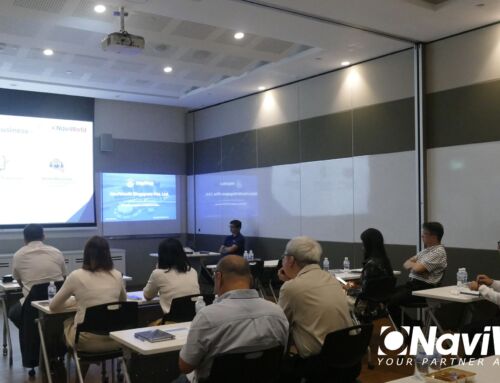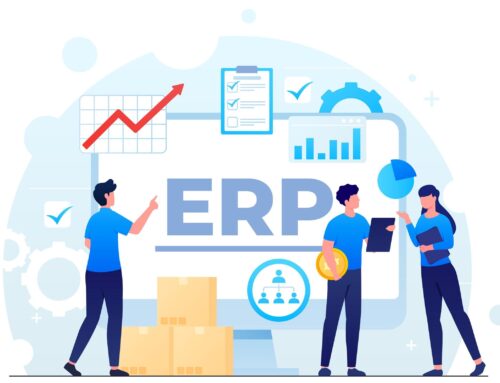How to Avoid Common Mistakes in ERP Implementation
It is common to make mistakes in ERP (Enterprise Resource Planning) implementation projects. Some of these are trivial, but we can avoid some of these common mistakes that will increase the project’s risks.
Inexperienced users and even experienced consultants often commit these mistakes.
So, how to avoid the following common mistakes in ERP implementation:
- Aim for Perfection
- Lack of Correct Leadership
- Over Customization
- Not taking the “User Acceptance Test” (UAT) seriously
- Poor Quality of Data
- Finger Pointing
Aim for Perfection
Naturally, users want a perfect ERP solution to solve their everyday work challenges. The following common consequences reflect the user desire for a perfect solution:
Common Consequences
Heavy Customization
Heavy customization is perhaps the most common mistakes to avoid in an ERP implementation.
When the standard ERP process cannot meet the user expectations, it often results in customization. Heavy customization will end up with many negative consequences, which you can read in our article on “Why You Should Minimize Customization in ERP Projects.”
Want to Include all the Business Processes
The integration of business processes is one of the most important outcomes of an ERP project. So, some users may want the ERP project to include integration to other solutions.
However, users should weigh each inclusion of business processes against their Return on Investment (ROI). Often, I found that some of the common requests for integrating ERP to solutions such as Payroll are not readily justifiable.
Delay in Project Completion
The ultimate result of wanting a perfect ERP will be the delay in project completion.
Strategy to Successful Project Implementation
Think Big
Have the Overall Process that you want to achieve in mind. Ask yourself, what do you want your ERP system to perform in the next few years.
Start Small
Users need to prioritize their wants vs. their needs. They should aim to go live as soon as possible to achieve ROI.
Slowly Progress to a Perfect Solution
Companies should conduct reviews after the project has gone live, and when their users are more familiar with the system. The company can then prioritizes the improvements needed and slowly enhance the system to the perfect solution.
The reality is that there is no perfect ERP. That’s why ERP software keeps improving with newer versions.
Lack of Correct Leadership
The root cause of most mistakes to avoid in ERP implementation is human. And companies need strong leadership to overcome these problems.
The following situations often occur in ERP projects:
- Treating ERP Project as an IT project and assign IT persons who have insufficient ERP experience to lead the project
- Managers worry about exposing their lack of knowledge of ERP.
- Lack of User participation
- When companies do not manage their users’ expectations, project requirement will run wild
- On the other extreme, users are reluctant to make timely decisions during the project
First, users must understand that ERP is about Business Process. It is the consultants’ responsibility to take these business processes and map the requirement to the solution. So, there should not be any fear that they do not understand ERP.
You can read our article on “10 Keys to Successful ERP Implementation” on how to overcome these challenges.
Heavy Customization
Heavy customizations (additional enhancement through programming) is one of the most common causes of ERP project delay and failure.
These heavily customized ERP projects resulted in:
- Project budget and schedule overrun
- Difficulty in support
- Costly during future upgrading
Not taking User Acceptance Test (UAT) Seriously
User Acceptance Test (UAT) is one of the most critical steps in ERP implementation. UAT is a replacement for the legacy “Parallel Run” process.
Usually, the consultants will guide the users on how to do the UAT at the beginning of the UAT process. Users will later carry out the UAT on their own. The challenge is that users are often distracted by their daily work during UAT.
When users do not conduct UAT thoroughly, it will result in un-tested errors after the project goes live. At that stage, it will be very tedious to reverse the wrong data generated by the error and correct the issue. It will often cause the user to lose confidence in the ERP system.
The project manager must track and ensure that users conduct the testing thoroughly.
Poor Quality of Data
The other challenging stage of the project is data migration. Those who do not have ERP implementation experience may be surprised that data migration consumes nearly 20% of the consultant’s effort. During data migration, the consultants need to screen data error and reload the data after users rectify the mistakes. And it is the common reason that causes panic during the ERP project going live.
There are a few ways to avoid these last minutes panics:
- Avoid last-minute changes, especially just before the go-live date. When the system is interlinked, changes in one area may have consequences in other settings and data. And if insufficient time is given to test out these changes, error during the project execution is bound to occur.
- Prepare and clean up the data earlier, even before the implementation starts.
Users should be aware that the consultants will not know your data and business as much as they are. So, it is the responsibility of the users to ensure the accuracy of their data.
Finger Pointing
It is common for users and consultants to point fingers when the project is not going smoothly.
An ERP system is complex, even consultants will make mistakes, but users will usually make more mistakes than experienced consultants.
Companies can put in all the effort to avoid the common mistakes in ERP implementation. However, some mistakes will still occur during implementation, and there will be difficult times during the ERP implementation.
Our recommendations:
- Minimize new requirement and changes when it is close to the go-live date
- Focus on the issues to resolve rather than who makes the mistake
- Prioritize the issues and resolve them accordingly
- Solve the root cause of the issues to prevent a recurrence
- Communicate and educate the users/consultants so that they will not repeat the mistakes
Conclusion on How to Avoid Common Mistakes in ERP Implementation
Implementing ERP (Enterprise Resource Planning) project can be challenging. This is especially so when users are not experienced and have to cope with their daily workload at the same time during the project implementation.
It is important to set aside enough time and resources for the project and go live ASAP with minimum customizations.
The benefits of a successful ERP project can be tremendous.
Remember, the Most Expensive ERP project is the one that FAILED!
If you like to discuss further and understand more about ERP implementation, please do not hesitate to contact us.



